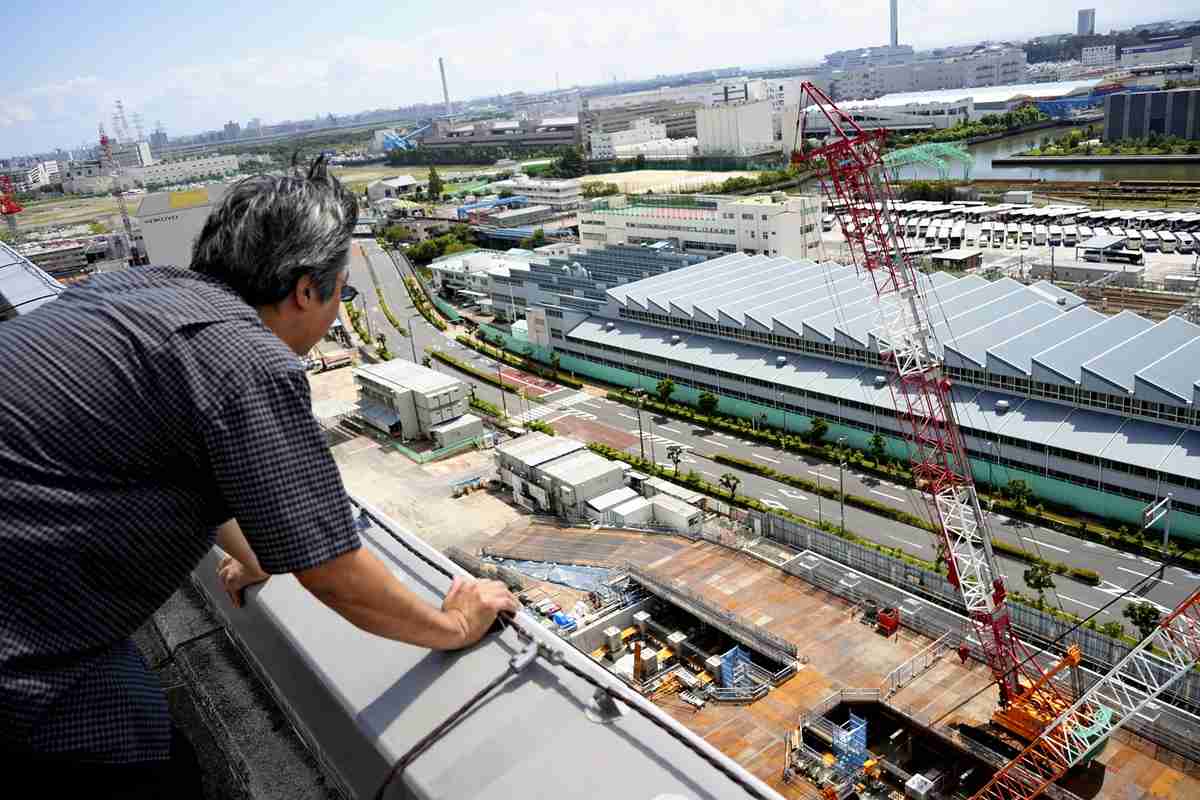
The Yomiuri Shimbun
Yuki Mizoi watches the construction of a data center directly next to his condominium unit in Koto Ward, Tokyo.
6:00 JST, October 7, 2025
With the rapid increase of data centers being constructed near residential areas, there has also been an increasing number of residents voicing opposition to them, or demanding more consideration be shown to residents.
With the rise of artificial intelligence services including AI programs, data centers are being built one after another to handle the huge volumes of information needed for AI.
In Tokyo, there has been a sizeable number of data centers built near residential areas. The anxiety of the residents lies in concerns about the centers’ waste heat and noise that could negatively impact residential environments.
“The government should make an environmental guideline on data centers as soon as possible,” said an expert familiar with the issue.
One data center is being constructed in the Shiohama district of Koto Ward, Tokyo, an area lined with warehouses and condominiums.
In an about 5,000-square-meter section of the district, cranes have been set up and construction noises can be heard from the site. Hulic Co., a major real estate company based in Chuo Ward, Tokyo, has been building a data center here since February.
Yuki Mizoi, 54, who lives in a condominium beside the construction site, voiced his anxiety while watching the construction site. “I fear that noises and the discharge of waste heat may continue all day due to the around-the-clock operations of the facility.”
The computer servers in data centers are cooled with equipment that discharges heat outside the facility. But there are no laws regulating the discharge.
In response, the condominium association of the residence where Mizoi lives submitted letters to Hulic several times, urging the company to consider the living conditions of residents.
An official of the company told The Yomiuri Shimbun, “We take the opinion of the residents very seriously and have continued discussions with them.”
In Koto Ward, residents who found out that another company planned to build a data center near them also voiced their concerns.
Considering the situation, the Koto Ward Office began to act. The ward’s ordinance requires business entities of such projects to set up a signboard notifying nearby residents of construction at least 90 days before applying for the building certifications.
In April this year, the ward office pushed the deadline forward to at least 120 days before the applications for data center construction. The ward office also urged companies to clearly indicate the locations of outdoor air conditioner compressor units under its guideline on handling data center construction.
An official of the ward office said, “It has the effect of encouraging companies to offer careful explanations” to residents.
Friction between residents and companies over the construction of data centers have also occurred in Hino and Akishima.
The reason why new data centers were built near residential areas in the Tokyo metropolitan area is partly because such locations offer better access to manage the facilities and perform maintenance.
According to Fuji Chimera Research Institute Inc., a Chuo Ward, Tokyo-based business research company, 63% of data centers in Japan are in the Kanto region, particularly in Tokyo.
The market size of the data center business was estimated to be worth about ¥4 trillion as of last year and is predicted to continue growing.
Prof. Ichiro Sato of the National Institute of Informatics, an expert of information science, said that along with the increase of data centers being built, disputes between nearby residents and companies will likely increase.
“Since many residents fear the heat island effect due to waste heat [from data centers], I hope the government will ease such anxiety by making an environmental guideline which can prevent negative effects from occurring around them,” he said.
The Japan Data Center Council, an industry association comprising data center operators and construction companies, aims to compile its own guideline by the end of this fiscal year. The guideline will stipulate how to protect nearby environments and pay consideration to residents.
Naohiro Masunaga, chief of the secretariat of the council said, “It cannot be denied that explanations to residents who may be affected were insufficient in some cases. We must create a process to seek the understanding of nearby residents.”


AloJapan.com